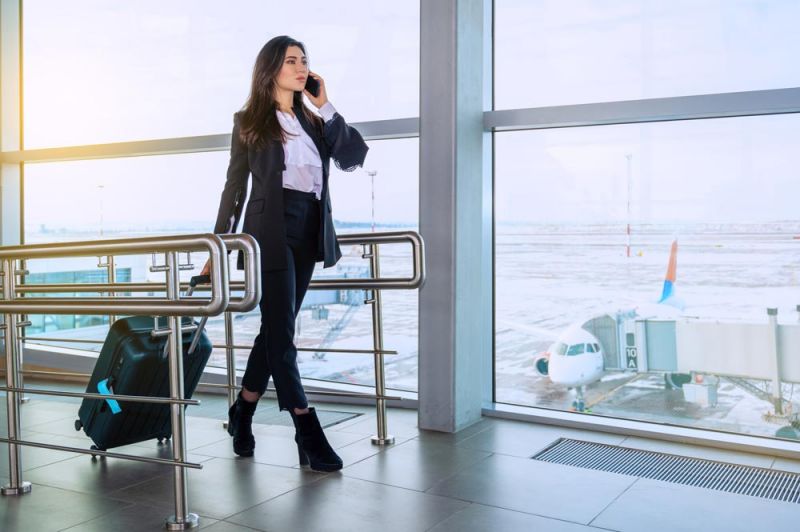
Carry On or Checked Luggage: What's Better
Whenever you prepare to take a flight, you have a choice to make: should you check your bags or use carry-on luggage, instead? A lot of travelers hesitate with this dilemma and aren't sure of the right answer.
There are pros and cons on both sides of the debate. Some travelers love the simplicity and cost-effective nature of only using carry on luggage. Meanwhile, others prefer the extra space and convenience provided by checked bags.
So, is it better to carry on luggage or check it? Well, in this guide, we'll aim to answer that specific question. We'll also look at some answers to other common questions you might have, like "What is checked luggage?" and "What is carry on luggage?" too.
What Is a Carry On Bag?

Let's begin with a simple definition of what carry on luggage is and how it works. As the name implies, a carry-on bag is a type of bag or luggage that travelers are able to carry onto the aircraft. This can include things like handbags, backpacks, and other bags and cases that are smaller than full-size suitcases.
Modern airplanes are equipped with spaces that are specially designed to store carry-on luggage, in the compartments over each seat, as well as in the gap underneath the seats. Other terms that you may recognize for "carry on luggage" include "hand luggage" and "cabin luggage".
Carry On Travel Size Restrictions and Rules
It's important to note that the rules and restrictions for carry-on luggage can vary from place to place and airline to airline. EU carry on restrictions, for example, state that you cannot include certain items, like large quantities of liquids, in your carry-on bag. Items like blades and large scissors are not usually allowed, and there may be many other restrictions, too.
The size and weight of your carry-on bag will also usually be checked. Airlines have limits in place to avoid passengers boarding with bags that are too big or heavy. The bag needs to be small enough to fit inside the overhead lockers. It also cannot be too heavy. Often, carry-on luggage is limited to 10kg or 22lbs in weight.
What Is Checked Baggage?

Next, let's look closer at how checked baggage work. Checked baggage includes any bags or cases that you check in at the check-in desk. These bags are handed over to the airport staff. They move along a series of conveyor belts and are taken to be loaded into the lower sections of the plane.
Once you hand over your checked baggage, you won’t see it again until you get to your destination and pick it up at the luggage carousel. Checked baggage is usually bigger and heavier than carry on bags. It’s commonly used when people are traveling for longer periods of time and have more items to take with them.
If your flight was delayed, canceled or overbooked within the last 3 years, you could be eligible for up to €600 in compensation.Check Your Flight
Checked Baggage Rules and Restrictions
Compared to carry-on, the rules for checked baggage tend to be less strict. This is because checked bags are taken away and stored safely on the plane where they can't be accessed by passengers. So there's less reason for the airline to worry about items like scissors and liquids.
However, there are still restrictions in terms of what you can and cannot carry. Each airline has its own rules. They also have rules on the size and maximum weight of checked baggage. It’s important to be aware of your passenger rights for all baggage. Many airlines enforce maximum weight limits of 22/23 kg or 50 lbs. It’s also worth noting that you may be able to obtain flight compensation or even a refund in cases where checked bags go missing.
What Is a Checked Bag?
A checked bag is simply another term for checked baggage. This is a bag that you will hand over at the check-in desk and will pick up again at your destination airport.
Is it Better to Check Your Luggage or Carry On?
So, now that we've seen the difference between check in baggage and hand baggage, which one is best? Well, the truth of the matter is that both types of luggage have their pros and their cons. Once you understand the carry-on luggage and suitcase difference, you can weigh up those pros and cons to find the best choice for you.
Carry-on luggage, for example, has the benefit of being much cheaper. You often don't have to pay any extra fees for carry-on bags. This means that you can save money by using only carry-on baggage. Plus, you won't have to wait around in long lines or at luggage carousels. So, using carry-on can help you speed through the airport.
Do you have to pay for check in luggage? Usually, yes. And this is one of the downsides. There's also the fact that you have to wait in more lines and spend more time in the airport. However, checked baggage has fewer restrictions and gives you more space. So you can pack more items, which is better for big trips and vacations.
So, overall, the answer to our initial question is that it depends. Sometimes, checked luggage is the best option, like if you’re planning a big trip or traveling with family. Other times, carry-on luggage will suffice.
No feedback
Leave your feedback
We don’t spam.
